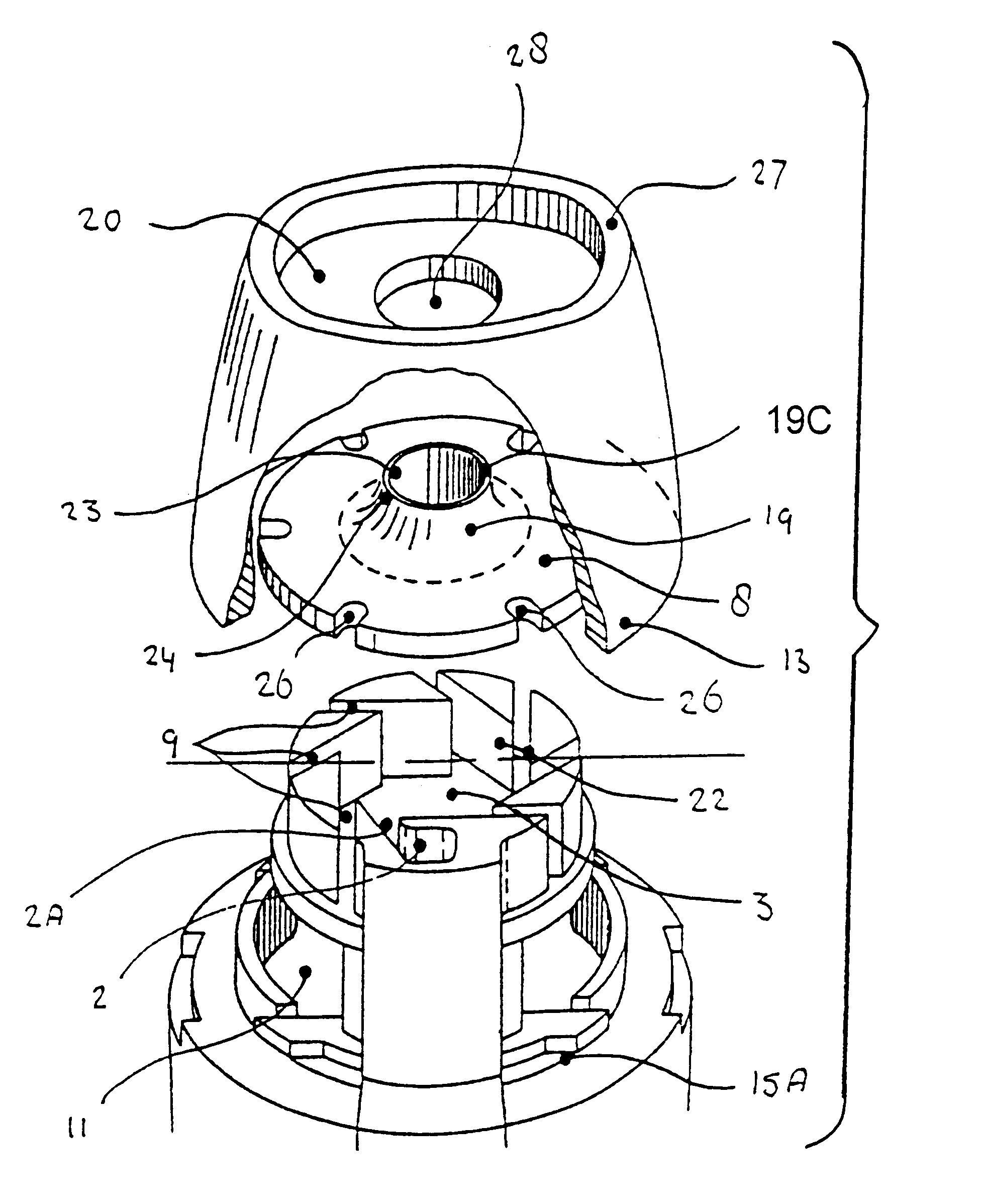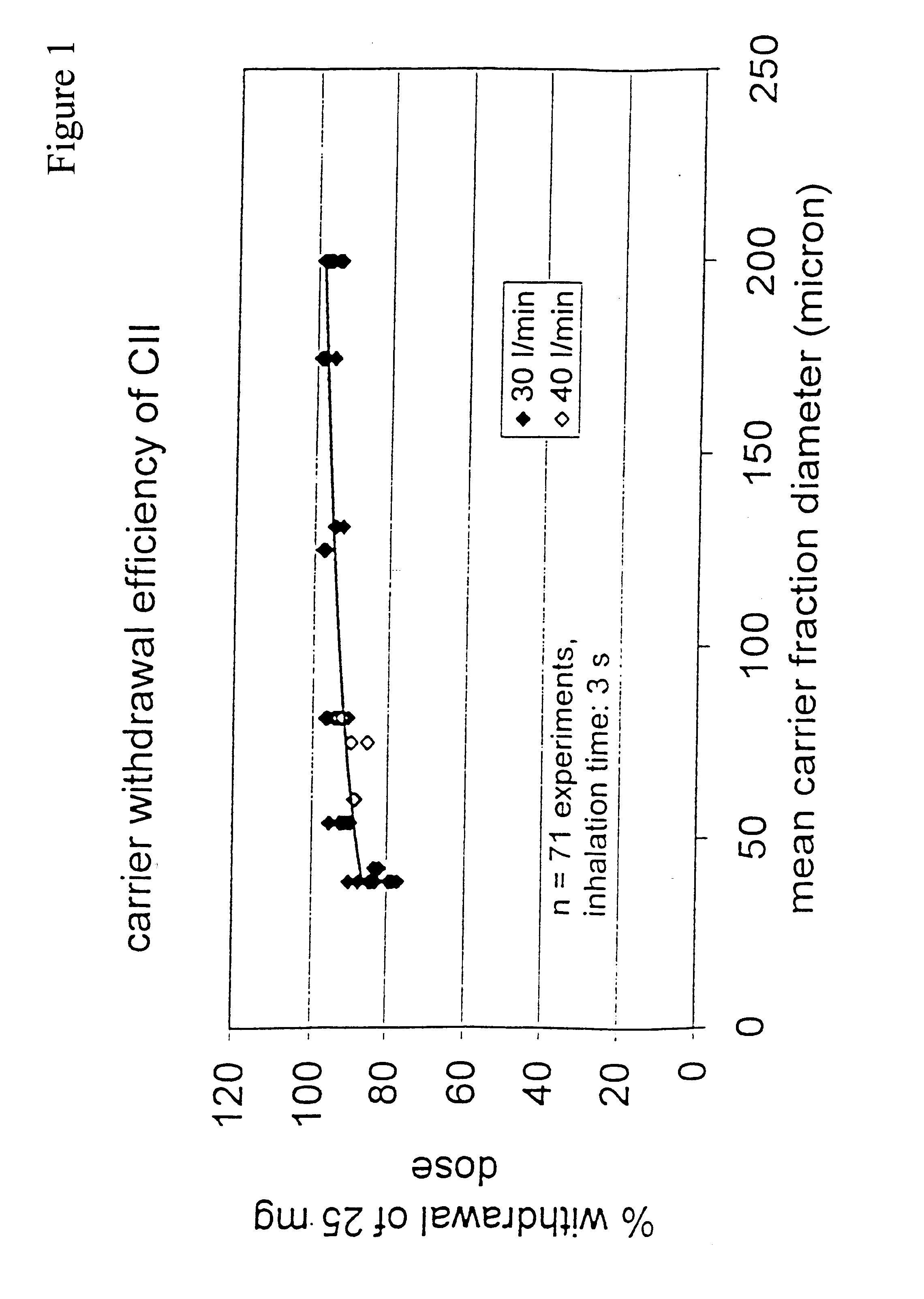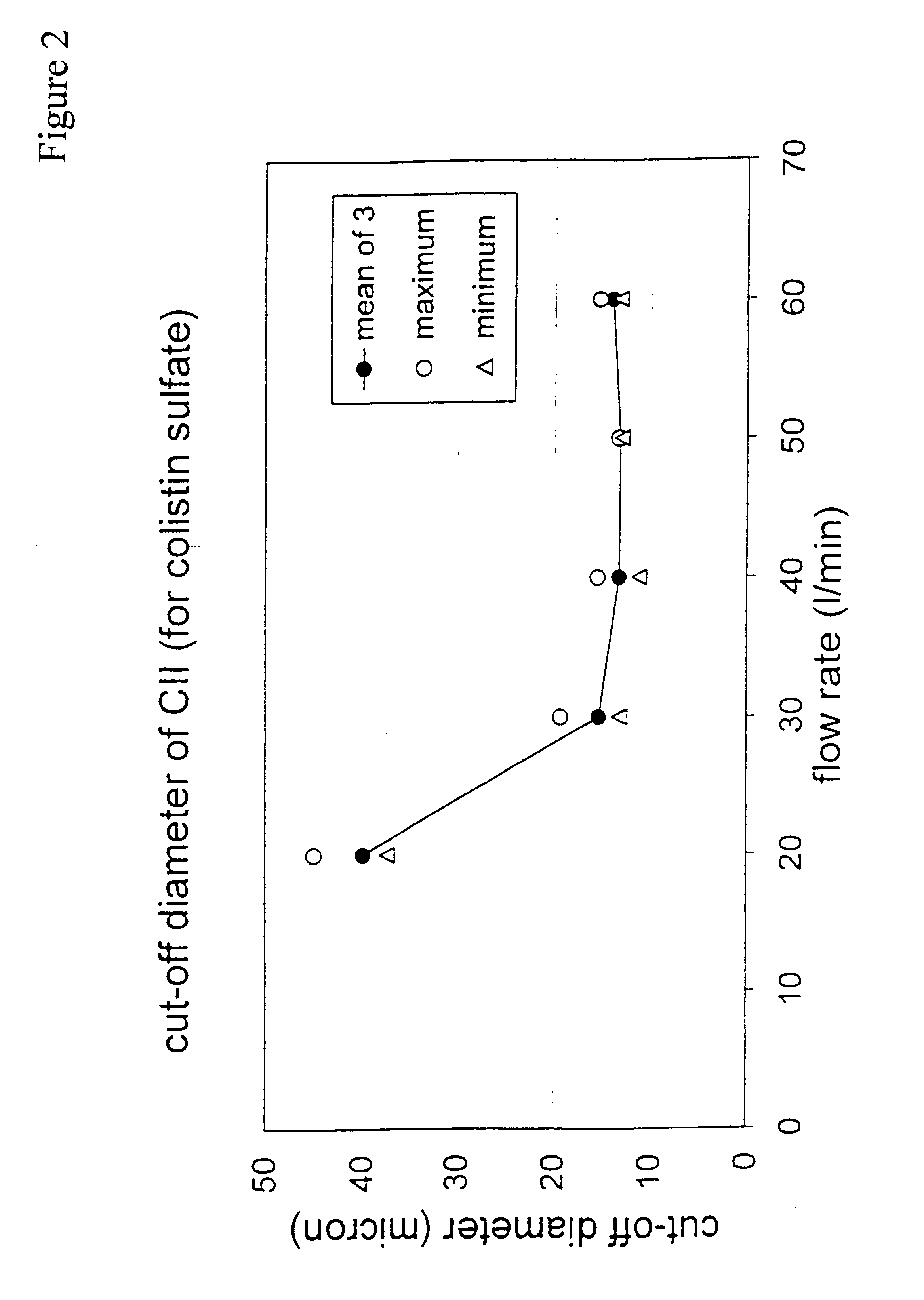Powder formulation disintegrating system and method for dry powder inhalers
a technology of disintegrating system and dry powder, which is applied in the direction of respirator, process and machine control, instruments, etc., can solve the problems of de-agglomeration principle, low efficiency in utilizing the available energy, and rather momentari discharge of the dose from the inhalation devi
- Summary
- Abstract
- Description
- Claims
- Application Information
AI Technical Summary
Benefits of technology
Problems solved by technology
Method used
Image
Examples
Embodiment Construction
The concepts described in EP 0547429, DE 19522416 and PCT / NL01 / 00133 comprise a family of de-agglomeration principles for different applications, all being different modifications of the same basic design. For all concepts, part of the inspiratory air flow is conducted through the dose compartment to entrain the powder. The downstream section of the powder channel, connecting the dose compartment and the de-agglomeration chamber, is tangential to the cylindrical wall of the de-agglomeration chamber. The de-agglomeration chamber has the shape of a disk, sharing its cylindrical axis with the mouthpiece cylinder. A tubular discharge channel, also with the same longitudinal axis, and a much smaller diameter than the de-agglomeration chamber, starts from the center of the cylindrical end of this chamber which is closest to the mouthpiece. Another part of the inspiratory air flow enters the de-agglomeration chamber through tangential slits in its cylindrical wall. The number of these bypa...
PUM
 Login to View More
Login to View More Abstract
Description
Claims
Application Information
 Login to View More
Login to View More - R&D
- Intellectual Property
- Life Sciences
- Materials
- Tech Scout
- Unparalleled Data Quality
- Higher Quality Content
- 60% Fewer Hallucinations
Browse by: Latest US Patents, China's latest patents, Technical Efficacy Thesaurus, Application Domain, Technology Topic, Popular Technical Reports.
© 2025 PatSnap. All rights reserved.Legal|Privacy policy|Modern Slavery Act Transparency Statement|Sitemap|About US| Contact US: help@patsnap.com



